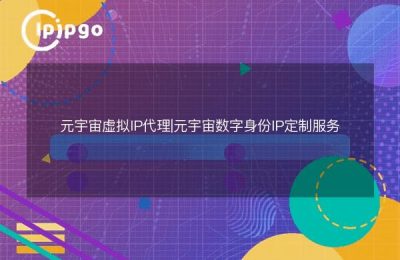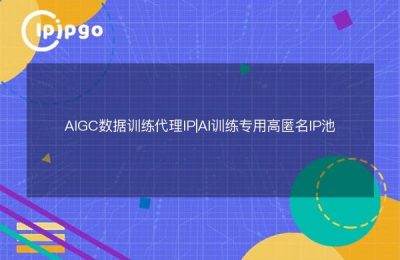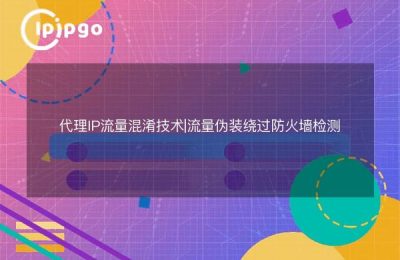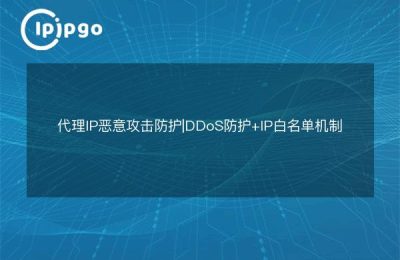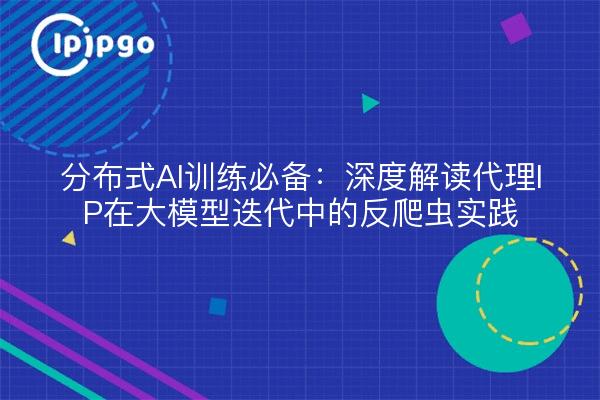
When AI training meets anti-crawling: the value of proxy IP is suddenly apparent
Last year, when a head AI lab was training a large multimodal model, their data collection system was suddenly paralyzed in a big way - not a lack of arithmetic power, not a mistake in the code, but triggering the anti-crawling mechanism of the target website. This real case exposed a key pain point in distributed AI training:When hundreds of training nodes initiate data requests at the same time, it is very easy to recognize as anomalous trafficThe
Why is your AI training always blocked?
Imagine you deploy 200 distributed nodes to do web data collection:
1. all nodes use the same export IP → directly blocked
2. Use a small number of IP rotations → high-frequency access still triggers alerts
3. Self-built proxy pool maintenance → high time cost and unstable IP quality
That's when it's time toProfessional Proxy IP Serviceto build real access networks.
Dynamic Residential IP Pooling is the Ultimate Solution
Our real-world testing revealed:
| IP Type | Success rate of requests | Anti-Crawl Recognition Rate |
|---|---|---|
| Server Room IP | 23% | 78% |
| General Residential IP | 65% | 32% |
| Dynamic Residential IP Pool | 92% | 9% |
Dynamic Residential IP Pool for ipipgoThe outstanding performance stems from its real home broadband resources, where each IP carries a complete network behavioral profile.
Build an AI Training Shield in Three Steps
Step 1: Sign up for ipipgo to get a test key
Through the free trial channel on the official website, you can get a dynamic IP resource containing 10 countries in 5 minutes.
Step 2: Configure an Intelligent Routing Policy
setup in the training cluster:
if Target Site == 'E-commerce Category':
Automatically switch US residential IPs
elif target site == 'News Category'.
Rotate European dynamic IPs
else.
Enable global IP pool
Step 3: Setting up the fusion mechanism
When an IP fails for 3 consecutive requests, it automatically switches to a new IP and marks the abnormal node, which can be configured directly in ipipgo's management background.
Real-life example: surviving 10 million requests per day
An AI company after using our solution:
- IP switching time reduced from 5.7 seconds to 0.3 seconds
- Increased data collection completeness to 98%
- O&M cost reduction 40%
Their engineers specifically mentioned:"ipipgo's on-demand billing model allows us to flexibly scale resources during peak training periods"The
Six must-know practice details
1. It is recommended that each training node be configured with 3-5 spare IPs.
2. Dynamic IP is more suitable for text collection, static IP is recommended for media downloads.
3. Setting reasonable intervals between requests (0.5-2 seconds random float recommended)
4. Regularly clear your browser's fingerprint cache
5. Note protocol matching (http/socks5)
6. Make good use of the request success rate monitoring panel provided by ipipgo
Frequently Asked Questions
Q: How to choose between dynamic and static proxies?
A: Dynamic IPs are used for text data collection, and static IPs are used for continuous session scenarios (e.g., login operations). ipipgo supports switching between the two modes at any time.
Q: How to prevent proxy IPs from being banned in bulk?
A: It is recommended to turn on ipipgo's intelligent rotation mode, the system will automatically adjust the frequency of IP replacement according to the strength of the target site anti-climbing.
Q: How is latency guaranteed for cross-country training nodes?
A: ipipgo has deployed transit servers in 20 major countries, and the latency of cross-border requests can be controlled within 300ms.
In the constant battle of AI training, theipipgo's 90 million real residential IP resourcesIt's like putting a cloaking device on your data collection system. Instead of fighting with the anti-crawling mechanism, it is better to use the real network behavior characteristics to realize the "big hidden in the city".


